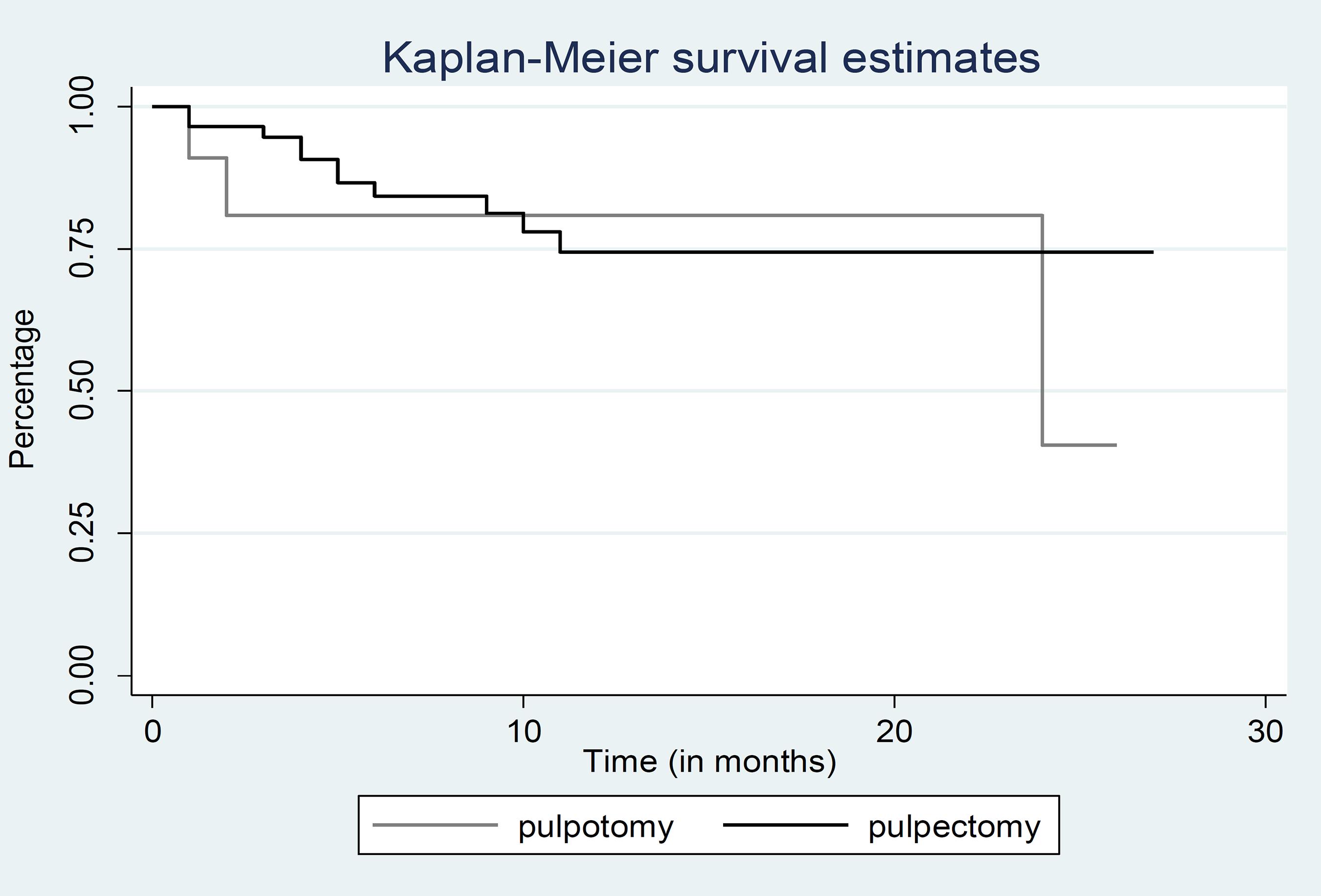Abstract
Objective:
To identify the clinical and radiographic conditions associated with failure of pulp therapy in primary teeth through a survival analysis.
Material and Methods:
A total of 1000 records of children assisted at the pediatric dentistry clinic of the Federal University of Parana, Brazil, from the years 2000 to 2010, were analyzed. The mean evaluation time was 10.61 months (minimum/maximum: 1/28) from the report of pulp therapy. The different types of treatments analyzed included indirect pulp treatment (IPT), direct pulp treatment (DPT), pulpotomy and pulpectomy. The Kaplan-Meyer method and log-rank test were used for the survival analysis. Exodontia was considered as the outcome variable and censors included: traumatic tooth loss, presence of the tooth in the oral cavity and physiologic tooth exfoliation.
Results:
A total of 122 records reporting pulp therapy in the primary teeth were selected. From this, 16 teeth (13.12%) were extracted. Survival analysis showed that pulpectomy presented lower survival rates when compared to conservative therapies (p=0.0297). Teeth with furcal lesions and pathological root resorption before pulp therapy had lower survival rates when compared to those that did not present these conditions (P=0.006). Presence of fistula and abscess after pulp therapy were also associated with lower survival rates (P=0.0062 and 0.0143, respectively).
Conclusion:
Signals of pulp necrosis were associated to lower survival rates in primary teeth submitted to pulp therapy.
Keywords:
Root Canal Therapy; Tooth, Primary; Survival Analysis



